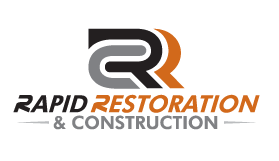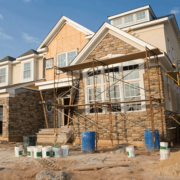Should You Remodel or Rebuild Your House?
Choosing whether to remodel your rebuild your house is like none other in the world of home improvement because of its finality. Lay the wrong bathroom flooring, even one as permanent as porcelain tile, and you can always back out of it. Tear down your entire house and you have no recourse.
You might own a house that “needs a little love,” as the real estate flier put it, but really it needs truckloads of love. Like loving a child, you might be wondering if yours should be the tender love of respecting and working with what’s there–or the tough love that comes in the form of a wrecking ball and excavator.
In any case, you know that the house where you reside (or an investment property) needs so much work that you cannot take half measures. Spiffy exterior paint, whole-house flooring, toilet replacements, and everything else like that will no longer do it. You have come to the point where it is either a whole-house remodel (the kind where you have to move out) or a rip-it-down-and-build-it-new project.
Rebuild Wins Long-Term by Resetting the Clock
If you plan to be in the house for the long-term and then sell it, it is usually wiser to tear down and rebuild, at least from a purely financial perspective.
Physical elements of a home are on a timer. The minute the hammer strikes your house for the last time, that timer starts ticking. Exterior paint might last up to seven years, but more like five years in inclement climates; dishwashers, less than a decade; central A/Cs, 10 to 15 years; three-tab composite shingles, about 20 years.
On top of that, while some elements’ lifespans are staggered, many others expire at roughly the same time. In terms of cost, replacing a dishwasher is nobody’s idea of fun. But imagine having to do that in the same calendar year that you replaced your roof, gutters, and central air conditioner.
By rebuilding, you reset the clock in terms of the house’s physical nature: everything from the appliances to the house’s envelope (roofing, siding, etc.). When it comes time to sell 15 years later, you’re selling a 15-year-old house instead of one that is 40 years old. As a bonus, you had the pleasure of living in a new house during those 15 years. Buyers are intimately attuned to the age of houses. And if they aren’t, their real estate agent and house inspector will make them well aware of this fact.
Take Control of How Much You Spend
If you’re tight on money, remodeling is always the way to go. The issue is scale–your ability to scale your spending up or down (or freeze it), according to your needs.
- Remodel: When you remodel a home, you have control over your spending. Remodeling is perfect for those who are hesitant or unwilling to make a big leap. You can remodel a small bathroom, then stop when finances are tight. Are you the recipient of a big tax refund? Now it’s time to fix that roof. Money tight again? You can scale the roof purchase itself up or down, from a price efficient composite shingle roof to a pricier standing-seam metal roof. Money gets distributed in drips or in gushes, your choice.
- Tear Down and Rebuild: This option is all or nothing. After your first big purchase–the demolition–you’re left with a vacant lot, committing you to build the new home. Unless you want to be the owner of a vacant lot, you must keep moving forward. Worse is to have the house that is partially complete. Structures left exposed to the elements age quickly. At a certain point, your rebuild would have to be rebuilt.
Choose If You Want Better or Cheaper
If you want better, tear down and rebuild. If you want cheaper, remodel. Even a wide-ranging whole-house remodel will still be cheaper than tearing down and building anew.
Roger Greenwald, RA, AIA, says that most of the time
the cost of tearing down and rebuilding will be about 20% higher than engaging in an extensive whole-house remodel. But the architectural benefits of tearing down and working with a clean slate can be huge: Better fundamental architectural design, all new systems, clean circulation, high quality windows, new and efficient heating and cooling systems, tall ceilings, and space designed for your personal living patterns placed where you need it.
Remodel Wins by Giving You Neat Bells and Whistles
Proponents of tearing down/rebuilding stress the coolness of new houses, with their mobile device-controlled heating systems, radiant heat flooring, master suites, and dedicated home offices.
That argument holds water, as long as you have the additional money to spend. Where that argument breaks down is that it fails to recognize that the house first has to be built. With remodels, basic elements of the house are already in place and paid for.
So, the extra cost for rebuilding mentioned above is what the person remodeling gets to spend on flashy things, like spas, man caves, and home movie theaters.
Determine the Ultimate Condition of the House
While all houses can be remodeled, not all houses should be.
Industry professionals generally agree that the following conditions merit a tear-down/rebuild, or at least swing the argument further in that direction:
- Desired improvements cannot be contained within the existing house footprint. Thus, you want an addition. The need for additional space is certainly not the only reason for building anew; additions get built all the time. The issue is that it happens in conjunction with extensive, expensive remodels of the existing house: a double draw on your funding.
- Foundation is bad and requires a lot of work before the house can be remodeled.
- Are ceilings too low for your liking? Because it’s no simple matter to raise a ceiling–unless there is a plenum or empty space up there–the floor above must be removed and then rebuilt.
Be Aware of Community Restrictions
One influence on your decision comes from outside. In years past, a homeowner was free to tear down and rebuild with relative impunity. Any kind of building was always subject to zoning and permitting, but these influences were far more lenient than they are now.
Since the late 1990s, the tide has been turning toward recycling rather than throwing away, and this trend includes housing, too.
Local building departments now cast a more critical eye on aspects of rebuilding such as size. The word McMansion did not even exist until the latter part of the 20th century. Now it is bandied around all the time by city councils intent on preserving the character of cities through the preservation of its housing stock.
Even Los Angeles, traditionally the most “tear down and rebuild” area in the U.S., has begun to enact building moratoriums designed to limit the size of houses. And because few rebuilds are content to remain within the same footprint as before, they are affected by these bans, as well.



 10201 W. 43rd Ave
10201 W. 43rd Ave
 303-412-9999
303-412-9999

